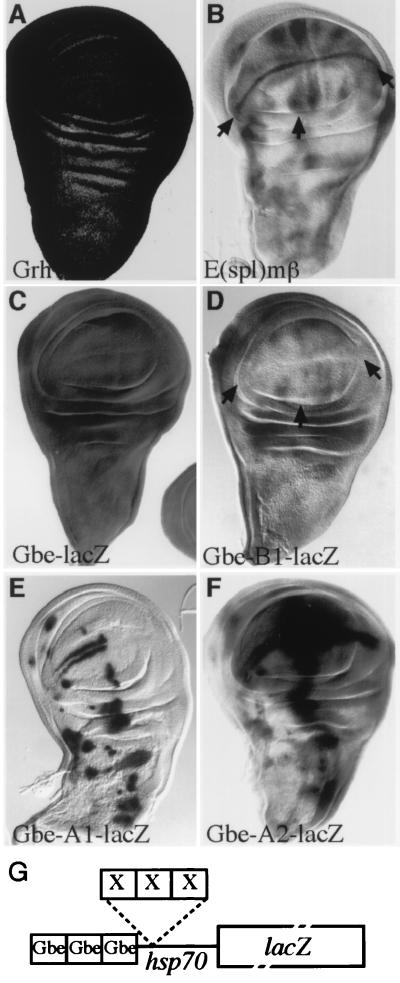FIG. 5.
Specific regulation conferred by B1, A1, and A2 sites in vivo. Three copies of each of the A1, B1, and A2 sites in tandem were placed adjacent to the Grainyhead binding sites in Gbe-lacZ, and the effects on in vivo expression of lacZ were evaluated. (A and C) Grainyhead (Grh) is expressed ubiquitously in the wing disc (A; detected with a monoclonal antibody) and drives uniform expression of Gbe-lacZ (C). (B and D) Insertion of B1 sites, Gbe-B1-lacZ, leads to lower levels of lacZ expression (D, arrows), with specific repression in regions where E(spl) genes [e.g., E(spl)mβ] are expressed (B). (E) Insertion of A1 sites, Gbe-A1-lacZ, results in a pattern of lacZ expression that resembles proneural clusters in the imaginal wing disc (Fig. 2D), demonstrating that a single base pair change (as in B1) has dramatic effects on the binding of endogenous proteins in vivo. (F) Expression of Gbe-A2-lacZ (E) is strikingly different from that of Gbe-A1-lacZ even though they contain identical E-box cores, illustrating the influence that sequences flanking an E box can have on protein recognition in vivo. In panels C to F, expression was detected by using X-Gal; reactions were terminated after 1 h (C) or ∼16 h (D to F). (G) Diagram illustrating the structure of the transgenes. X represents sites of insertion of B1, A1, and A2 oligonucleotides (not to scale).

